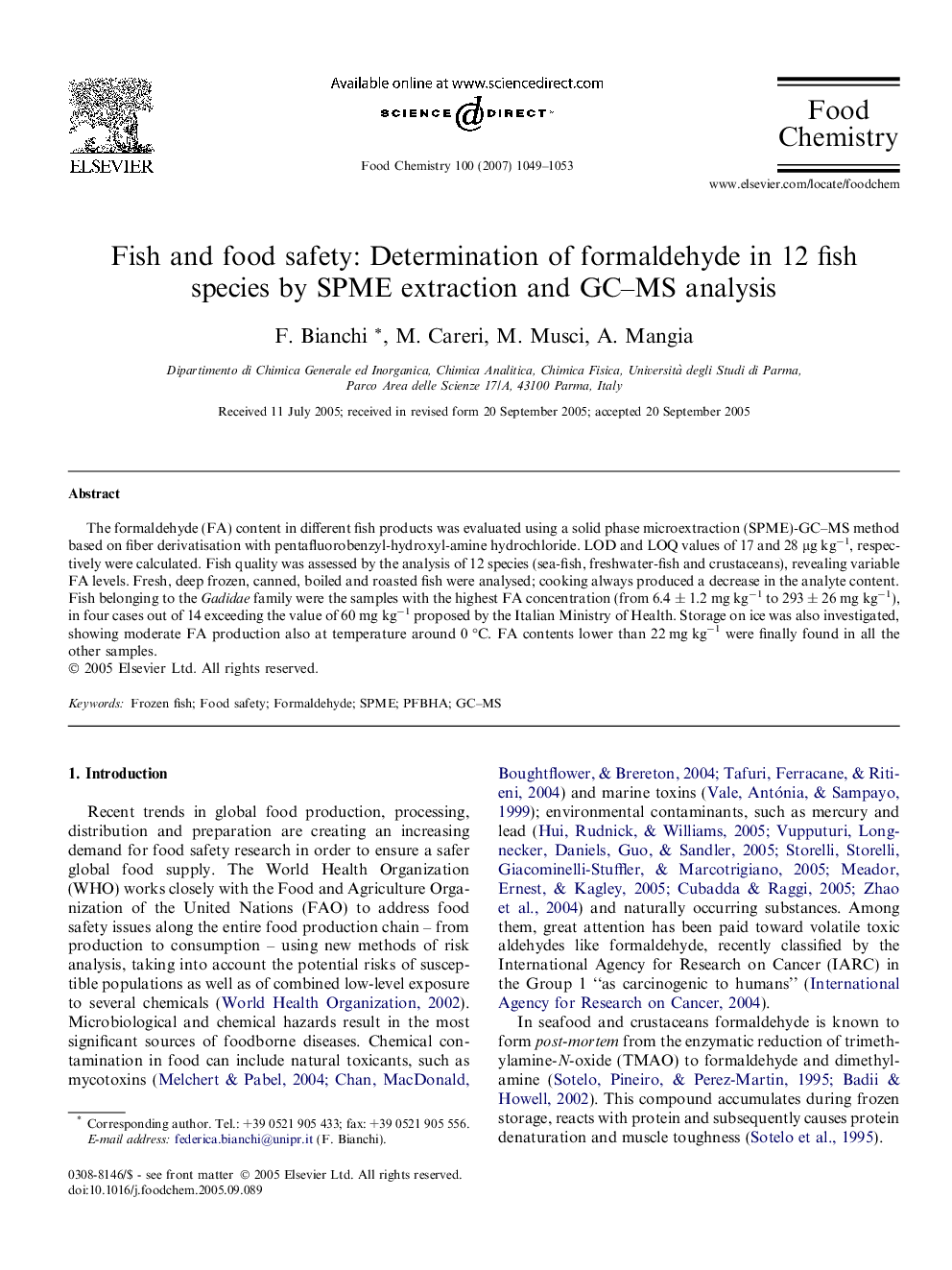| Article ID | Journal | Published Year | Pages | File Type |
|---|---|---|---|---|
| 1190888 | Food Chemistry | 2007 | 5 Pages |
The formaldehyde (FA) content in different fish products was evaluated using a solid phase microextraction (SPME)-GC–MS method based on fiber derivatisation with pentafluorobenzyl-hydroxyl-amine hydrochloride. LOD and LOQ values of 17 and 28 μg kg−1, respectively were calculated. Fish quality was assessed by the analysis of 12 species (sea-fish, freshwater-fish and crustaceans), revealing variable FA levels. Fresh, deep frozen, canned, boiled and roasted fish were analysed; cooking always produced a decrease in the analyte content. Fish belonging to the Gadidae family were the samples with the highest FA concentration (from 6.4 ± 1.2 mg kg−1 to 293 ± 26 mg kg−1), in four cases out of 14 exceeding the value of 60 mg kg−1 proposed by the Italian Ministry of Health. Storage on ice was also investigated, showing moderate FA production also at temperature around 0 °C. FA contents lower than 22 mg kg−1 were finally found in all the other samples.
